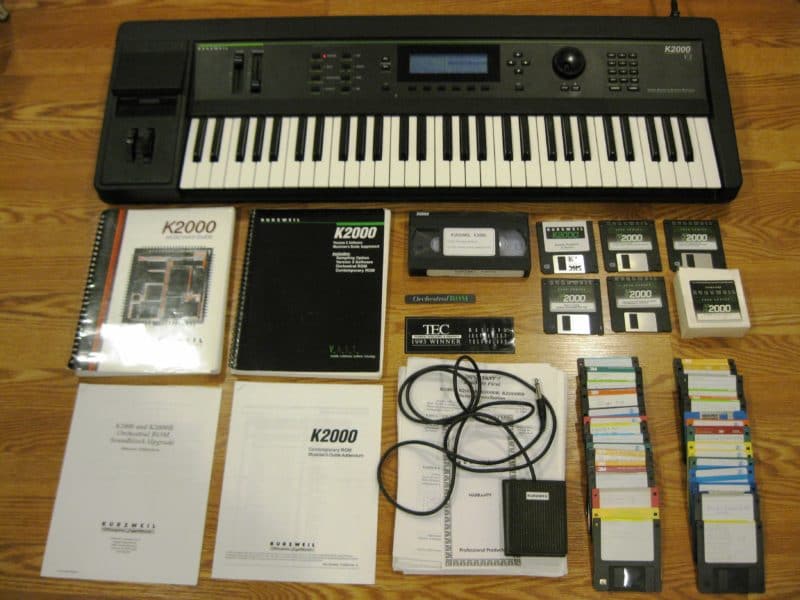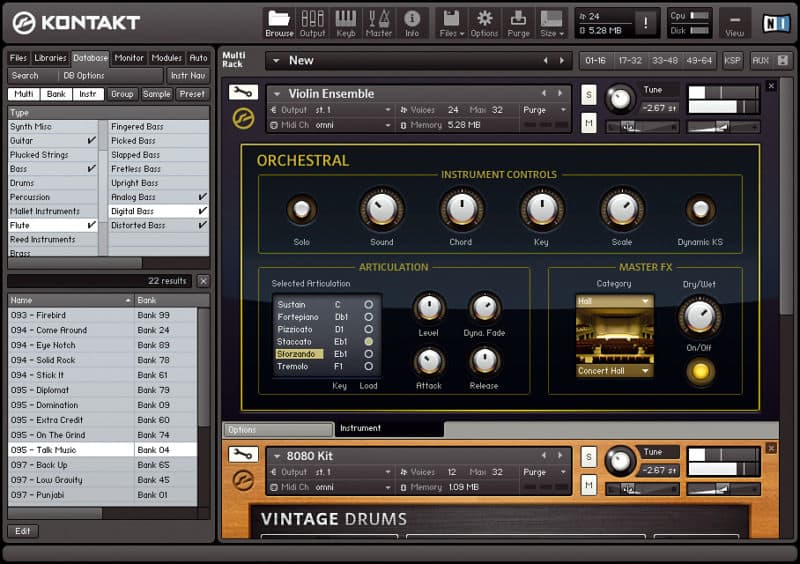Music Production, Opinion
The History Of Audio Sampling Through Bunker 8
We have had our moniker, Bunker 8 Digital Labs for as long as the audio sampler has been in existence, so we thought it fitting that we give the history of audio sampling through Bunker 8.
Our sampling journey started with my very first setup in my Parent’s basement. Through careful money management, I managed to scrape together enough to buy the Akai S612 sampler. Yes, the specs are this sampler were amazing. The S612 was one of Akai’s first professional rack-mount samplers, released back in 1985. Some of its features included 12-bit sampling from 4 to 32kHz with loop and truncate functions, an overdub function and mic or line input jacks. Internal memory is only 128KB which gives a maximum of 8 seconds sampling time at the lowest sampling rate available.

An optional disk drive that features the quick disk (QD) 2.8-inch format is needed for permanent storage of samples. Only one sample is stored to each side of the disk. So it was truly an amazing piece of technology. Imagine, one sample at a time, one disk at a time. At the time I carted two of these around on a tour so that I could trigger two samples at the same time. As I discovered as we all did, the first thing I sampled brought me right back to the time I got a tape machine from my parents for Christmas. I plugged into a mic, burped into the mic and started to play the keyboard. Instantly, I was in gross-out heaven. I had musical burps and with the sample overdub function, combined it with a fart sound. yes, everyone, I saved that sample on quick disk. All of you with burp and fart discs, raise your hands.

I was insanely jealous of anyone who could afford the Akai S1000, well beyond my budget. I managed to save up again and purchased a used Akai S950. This was when not only did sampling become fun, it became serious. This sampler was a total studio staple and I still have it. It was exactly the same as the S900. aside from the fact that it used HD floppy discs. An extremely big deal.
The S950 sampler was Akai’s first truly professional sampler, released in 1986. Its sampling specifications were pro-quality at the time: 12-bit stereo sampling, 7.5kHz to 40kHz variable sampling rates and a maximum of 63 seconds of sample time at 7.5kHz. Up to 32 samples can be created and stored to disk along with any edit settings. This was one of the first rack-mount samplers to use a built-in disk drive. Although the drive could load sounds while you play, it was still a very slow process.
Editing and programming the S950 is a very good precursor to the advanced S3000 series. There are lots of advanced edit capabilities for looping, truncating, velocity crossfading, tuning and even analog-like parameters to control. Individual outputs for each of the eight voices, stereo mix out, and stereo input.
I wrote my first number one hit dance song on this as the band Nex2Us, called “The Big Sleep”. We sampled it from a Ren and Stimpy Pilot called Big House Blues. We sampled a dog character from the show called Jaspar that Ren meets in the pound. The sample was the phrase “You don’t wake up from the big sleep”. At that time I used to have a Casio Portable DAT machine plugged into a tiny television in my parent’s basement. I would use DAT tapes and record anything interesting I heard off of television or any noises from the outside. That one song gave me my start in the music business and to the relief of my parents allowed me to move out of their basement.

With the money I received, I upgraded my studio in a very significant way. I purchased two Mackie CR1604 mixers, kept a number of keyboards and modules and then made a massive purchase at the time, over 12,000 on a fully loaded Kurzweil K2000. There was a special function on the Mackie CR1604. If you sent the vocal channel through the ALT 3/4 outputs, I could record those inputs directly to my Casio DAT machine. Then, using the digital output on the DAT machine, I could sample the audio directly into the sampler. Using keys on the K2000 keyboard, I could edit and trigger vocals directly. Bam, I finally had a full digital studio. This was crude but incredibly effective. When you have to cut up the vocals with a sampling keyboard, you really learn how to do things efficiently. It would only take me 8 hours to get all of the vocals edited and ready to be a part of the song, and I could control the triggering of vocals, fake harmonies with different keys of the sampler, create forward and backwards repeat effects that would have been impossible at the time any other way. This was really allowed my audio creations to take off. The software sampler was years away from being anything possible on the PC. You could spend upwards of $20,000 at the time for an interface that allowed you to record vocals and have them appear directly in Cubase, but that was well beyond anything I could afford.

There were many software samplers that I tried and that are too numerous to list, but the one we finally landed on was the sampler that has simply taken over the world, Native Instruments Kontakt. This sampler has grown like Native Instruments has grown. Native Instruments have become the largest music software instrument company on the planet. Brilliant innovations, they go from strength to strength. This sampler is the anchor of everything we do in a digital sense. With Komplete 10 and the Komplete Kontrol, there is full studio integration. Every critical parameter is at your fingertips with this sampler and basically, just about every major sample library that is worth anything is developed on the Native Instruments platform. There is so much to say about this product, I would encourage you to read this review for greater details.
I just had to wipe a tear away here, thinking about how long samplers have occupied the creative space of the music I produce and how much music technology has advanced in the process.

